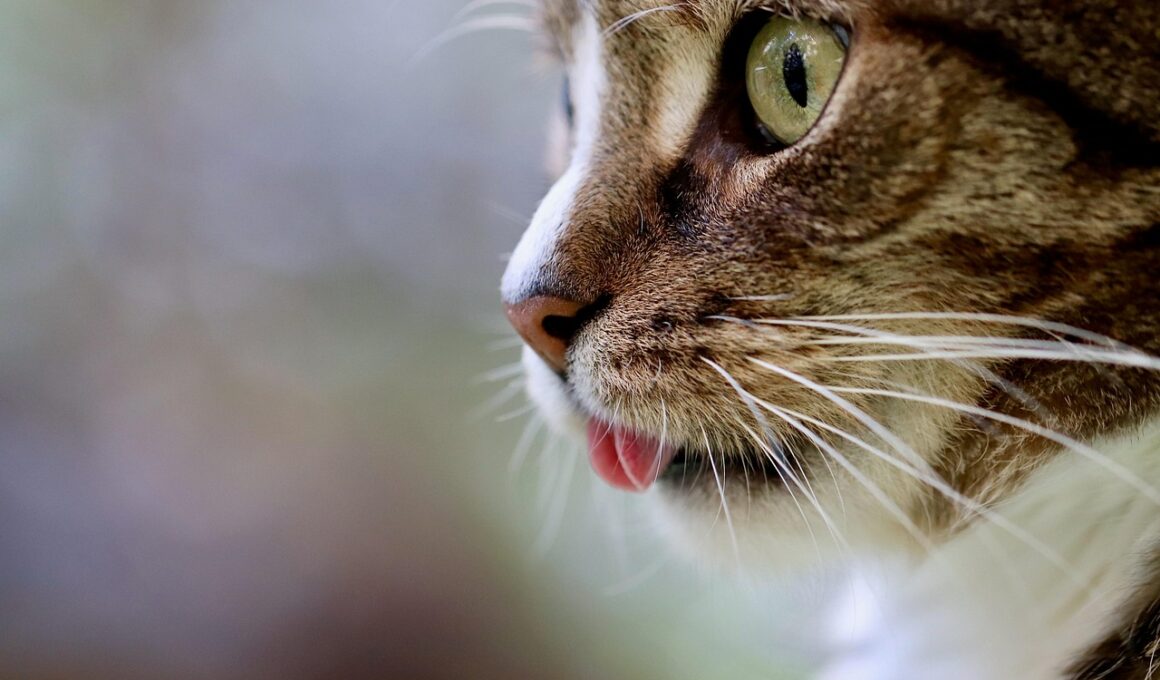Training Cats to Assist Individuals with Disabilities
Training cats for therapy or service involves a specialized approach to prepare them for aiding individuals with disabilities. This training allows cats to enhance the lives of their owners by providing companionship and support. Cats can be trained to assist in various activities, offering emotional comfort and social interaction. Key components of training include positive reinforcement techniques, socialization, and incorporating different methods to strengthen the bond between the cat and its owner. Training typically starts with basic commands and gradually includes specialized tasks, such as alerting owners to medical issues or providing comfort during stressful situations. Owners are encouraged to engage with their cats, fostering a supportive environment conducive to learning. Additionally, certain breeds may have characteristics that make them more suitable for therapy work. It’s essential to recognize the cat’s personality and select appropriate training exercises that align with its natural temperament. Regular practice, patience, and consistency play crucial roles in successful training outcomes. Furthermore, professional guidance may enhance the effectiveness of the training process, ensuring both the cat and owner benefit fully from this partnership.
Understanding the unique traits of cats is essential when training them for therapy or service. Unlike dogs, cats have distinct social behaviors and independence, which significantly influence their training process. Recognizing these traits allows trainers and owners to adapt methods satisfactorily, tailoring the experience to the feline’s personality. For instance, some cats respond more positively to playful interactions, while others prefer a calm environment during training sessions. Establishing a positive relationship between the owner and the cat can speed up the training process. Owners should focus on reinforcing desired behaviors through treats or affection, creating an enjoyable experience that encourages learning. Activities may include retrieving specific items, following simple commands, or providing comfort to the owner in various situations. A gradual increase in complexity in training exercises is vital to maintain the cat’s interest and motivation. Routine and consistency should also be maintained, making the process predictable for the cat. This understanding sets the groundwork for effective training and enhances the emotional connection between the cat and its owner, which is crucial for therapeutic success.
Preparing Cats for Specific Tasks
Once the basic training is established, preparing cats for specific tasks is the next progressive step in their training journey. This stage focuses on developing skills that will enable them to assist individuals with disabilities effectively. Tasks may include alerting owners to seizures or changes in blood sugar levels, fetching medication, or providing emotional support during stressful situations. It is crucial to train the cats in a safe, respectful manner, considering their comfort levels and socialization needs. Utilizing targeted training sessions can significantly enhance their capability to perform these tasks. Short, consistent practice sessions have proven more effective than longer, infrequent ones. Additionally, integrating these tasks into daily life can reinforce their learning, turning training into a natural part of their routine. Owners may also wish to involve other family members in this process. Allowing different people to work with the cat ensures that it becomes accustomed to various commands and situations, solidifying its role as a service animal. Furthermore, regular assessments should be conducted to monitor progress and adapt training as needed, ensuring ongoing effectiveness and mutual satisfaction.
Socialization is an integral aspect of training cats for therapy or service roles. It’s imperative that these cats are exposed to various environments, people, and other animals during the training process. This exposure helps to reduce anxiety and promote adaptability in new situations. Positive interactions with strangers, including strangers with disabilities, can help the cat learn to provide appropriate support and comfort. Utilizing controlled environments, like training classes or supervised social events, can provide many opportunities for cats to practice these skills. Additionally, socialization should start early in the training process to maximize effectiveness; kittens are usually more adaptable to new experiences. Owners can simulate environments by inviting different friends over or visiting public spaces to allow the cat to adjust to different stimuli. Familiarity with varied settings leads to a more confident and capable cat in real-world scenarios. The ultimate goal is to prepare the cat for any situation it might face as a service or therapy animal, ensuring it can deliver support calmly and effectively. Ongoing socialization throughout the cat’s life will ensure it remains comfortable and effective in its role.
Maintaining Training Effectiveness
Continuing education and reinforcement of training is crucial for maintaining a cat’s skills as a service animal. Over time, without consistent reinforcement, these skills may diminish, leading to decreased reliability in performing tasks. Owners must incorporate regular training sessions into their routines, ensuring that the cat remains engaged and sharp in its skills. Creating engaging refreshers through play and rewards can maintain the cat’s interest in performing its tasks. It’s beneficial to celebrate small successes during training revisit sessions to keep the cat motivated. Monitoring the cat’s behavior can provide valuable insights into its comfort and effectiveness, guiding further training adjustments needed. If a cat appears stressed or overwhelmed, or if its behavior changes significantly, reassessment of the training methods should be considered. Evaluating external factors, such as the owner’s emotional state or changes in routine, can help identify reasons behind behavioral changes. By staying attuned to these nuances, owners can create a training environment that remains responsive and tailored to the specific needs of both the cat and its owner, thus promoting their ongoing partnership.
Collaboration between trainers and healthcare professionals can enhance the effectiveness of the therapy cat training process. Training can sometimes benefit from expert opinions, ensuring that the needs of both the cat and the individuals it assists are met efficiently. Healthcare providers can offer insights into specific tasks that the therapy or service cat could perform to aid their clients based on individual disabilities. Together, they can develop a training plan that encompasses the pet’s capabilities and the needs of its owner. Trainers skilled in positive reinforcement can execute these plans effectively, maintaining a focus on comfort and well-being for the cat and its owner. Regular communication between trainers and healthcare professionals can facilitate necessary adjustments, tailoring the approach as needs evolve. Maintaining a unified, collaborative approach ensures that the cat truly serves its purpose, maximizing the therapeutic benefits it brings to its owner. Furthermore, sharing best practices and success stories can inspire new approaches in therapy animal training, benefiting the broader community. This collaborative atmosphere can enormously enhance the overall quality of care individuals receive, showcasing the indispensable role of trained cats in therapeutic settings.
Benefits of Therapy Cats for Individuals with Disabilities
The presence of therapy cats significantly benefits individuals with disabilities in various ways. They offer not only practical support but emotional comfort, enhancing the quality of life for their owners. Therapy cats can help reduce feelings of anxiety and depression, providing companionship that alleviates loneliness. Research indicates that interactions with animals can lower stress levels and improve the overall emotional well-being of individuals with disabilities. These cats can become vital partners, aiding in socialization and encouraging interaction with others. They often act as icebreakers, allowing their owners to connect with people in ways they may otherwise struggle to achieve. Additionally, the routine and responsibility involved in caring for a cat can foster independence and a sense of purpose among individuals with disabilities. Engaging in activities such as grooming or playing with their therapy cat can provide a sense of structure and accomplishment. Overall, therapy cats contribute significantly to enhancing emotional states, improving social skills, and providing practical assistance, illustrating the profound bond that can exist between humans and animals in a supportive context.
In conclusion, training cats to assist individuals with disabilities is a rewarding yet intricate process that requires dedication, patience, and a profound understanding of the animal. Each cat has unique characteristics and learning styles, making individualized training approaches important. By recognizing their strengths and weaknesses, trainers and owners can develop effective training plans that cater to the specific needs of the cat and the person it assists. Ongoing training and socialization are fundamental to maintaining the cat’s effectiveness and comfort in its role. Building a strong partnership between the therapy cat and its owner ensures that the benefits of this relationship are mutual and deeply fulfilling. Collaboration with professionals can enhance the education process, providing valuable insights that contribute to the overall effectiveness of the training program. The importance of therapy cats in transforming lives cannot be overstated, as they provide both emotional support and practical assistance to individuals with disabilities. Their presence and unique abilities make them invaluable companions, serving to enrich the lives of their owners. As we continue to explore ways to enhance their contributions, the future of therapy cats looks bright, promising many more success stories.


